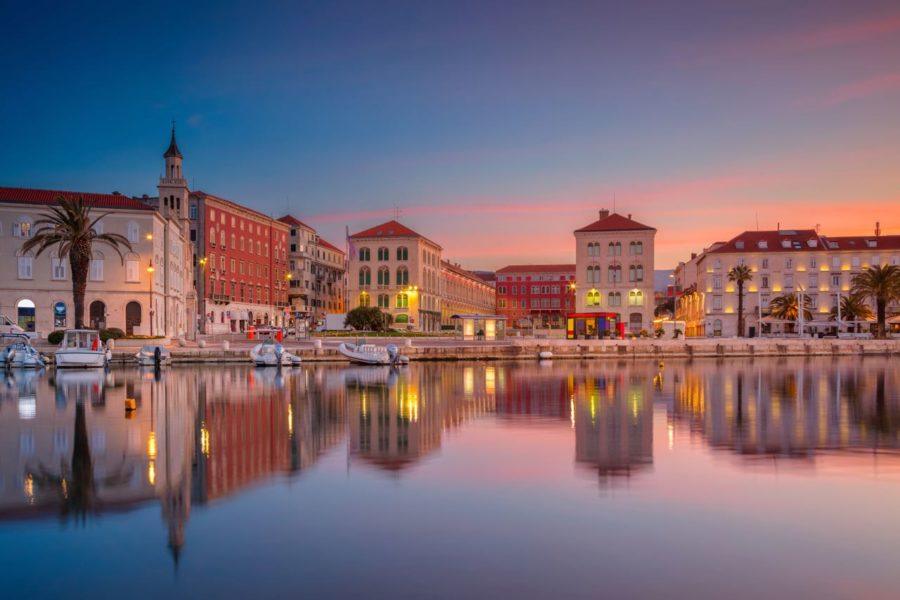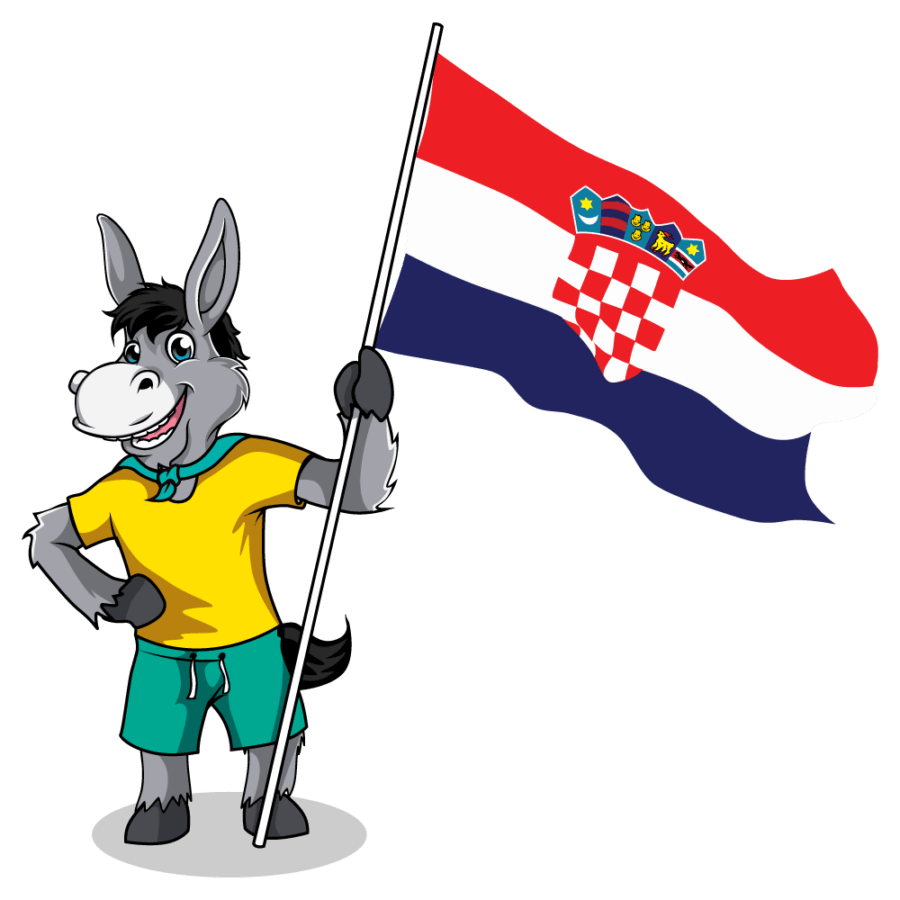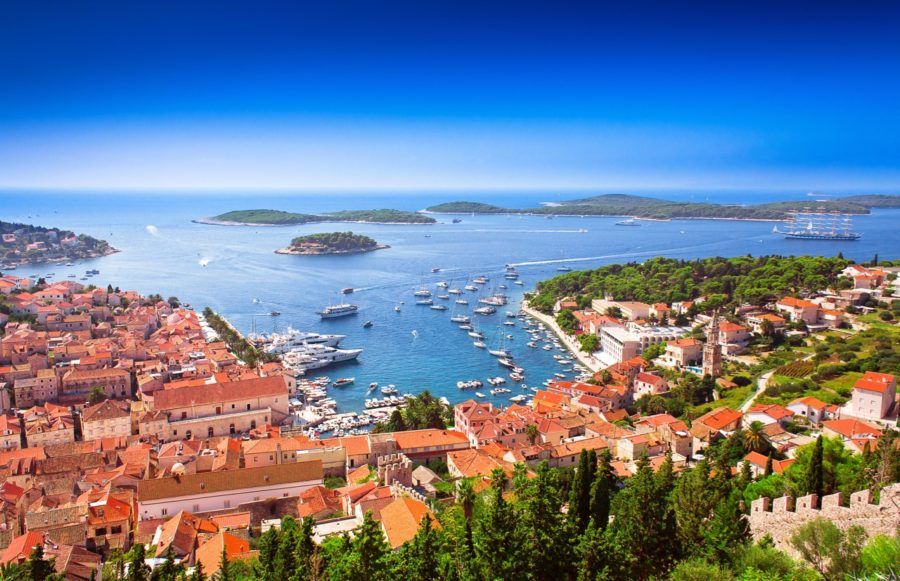G’day, mates! As an Aussie who’s been married to a lovable Croatian and living in this stunning country for a decade, I’ve picked up more than just a love for its scenic coastlines and delicious Ćevapi.
Let’s see how many of these interesting facts about the Croatian language you might know!
While I may have initially struggled with pronouncing some Croatian words, the language journey has been an absolute ripper! So, are you keen to dive into the world of Croatian?
Come along as I share 11 fun and fascinating facts about the Croatian language (or “Hrvatski” as the locals call it). From its melodious dialects to quirky sayings, I guarantee it’ll be a bonza adventure Apart from being the official language in Croatia, Croatian is one of the three official languages in Bosnia & Herzegovina and one of the 24 official languages of the European Union.
Apart from being the official language in Croatia, Croatian is one of the three official languages in Bosnia & Herzegovina and one of the 24 official languages of the European Union.
3. Croatian Grammar Was Written By Bartol Kašić
The first Croatian grammar was written by Bartol Kašić and published in 1604, only 18 years after the first English grammar. It was written in Latin.
Bartol Kašić, a Jesuit priest from the 17th century, is credited with composing the first comprehensive grammar of the Croatian language. His work, titled “Institutionum linguae illyricae libri duo” (Two Books of Instruction in the Illyrian Language), was published in 1604. “Illyrian” was a term historically used to refer to the Croatian language.
4. Croatian Language Is Tricky

The Croatian language has four past tenses, one present tense, and two future tenses – but you only need to know one “main” past, present, and future tense to be able to speak Croatian properly.
The Croatian language is known for its rich system of tenses. It has four past tenses (Perfect, Aorist, Imperfect, and Pluperfect), one present tense (Present), and two future tenses (Future I and Future II). This system allows speakers to express various nuances of time and aspect in their speech.
Brands We Use And Trust
5. Croatian Has 30 Letters
The Croatian language uses the Latin (or Roman) alphabet. The Croatian version of the Latin alphabet consists of 30 letters. The standard Croatian alphabet includes the following letters:
A, B, C, Č, Ć, D, Dž, Đ, E, F, G, H, I, J, K, L, Lj, M, N, Nj, O, P, R, S, Š, T, U, V, Z, and Ž.
6. Croatian Has 8 Unique Letters
There are eight letters in Croatian that you will not find in the standard Latin alphabet.
Notably, the letters “Č,” “Ć,” “Dž,” “Đ,” “Lj,” “Nj,” “Š,” and “Ž” are distinct letters in the Croatian alphabet and represent specific sounds that are unique to the language.
7. It’s Missing Letters
The Croatian alphabet does not have the letters q, w, x, or y. When comparing the standard Latin alphabet (which has 26 letters) to the Croatian alphabet, the Croatian language does not use the following letters:
– Q
– W
– X
– Y
It’s worth noting that while these letters are not a part of the standard Croatian alphabet, they might still appear in foreign names, brands, or loanwords.
8. Croatian Letters Have Two Letters

What?
Yes, it is true. The Croatian language has certain letters that are represented by two characters. These are known as digraphs. In Croatian, these digraphs are considered as single letters for the purposes of dictionaries and other alphabetical listings. Some of the commonly used digraphs in Croatian are:
- Dž – represents a sound similar to the “j” in the English word “jam”
- Lj – represents a sound that doesn’t have a direct equivalent in English but can be thought of as the “ll” in “million”
- Nj – represents a sound that’s similar to the “ny” in “canyon”.
It’s important to note that these digraphs are considered single letters in Croatian, and they are distinct from the individual letters that make them up. For instance, “nj” in “Njemačka” (Germany) is different from “n” followed by “j” as in “panj” (stump).
9. Two Croatian Letters Looks The Same But Are Not
Č and ć are different letters, not different accents of the same letter. They sound the same to me, but my son tells me off and assures me they sound different.
While they might look similar and both represent variations of the “ch” sound in English, they are distinct letters in Croatian and have different pronunciations:
- Č (č) – this letter is pronounced similarly to the “ch” in the English word “chocolate”
- Ć (ć) – this letter is pronounced a bit softer than “č.” It’s similar to the “ch” in “chew” but softer
10. It Has Easy Sounds
1 letter = 1 sound. Phonetic.
Always.
Each letter is always pronounced the same. There are no silent letters; there are no special combinations of letters, making it really easy to learn how to read in Croatian.
Croatian is a phonetic language.
This means that words are generally pronounced as they are spelled. Each letter in the Croatian alphabet corresponds to a specific sound, and these sounds are consistently represented by the same letters. For instance, the Croatian language employs the Latin (or Roman) alphabet, and certain letters are modified or added to represent the language’s specific phonetic system.
Still, I struggle to speak… so while it helps it is no magic wand.
11. 24 Letters Make Up The Longest Word.
The longest word in the Croatian language has 24 letters; it is:
prijestolonasljednikovica
It means the wife of the prijestolonasljednik, heir to the throne.
Learn Croatian Online
We’ve been taking weekly Croatian language Skype lessons for some time now with our teacher, who provides an excellent service. She is currently taking on new students, so if you’re interested in learning or improving your Croatian, now is the time.
Learning Croatian one-on-one with a language teacher via Skype has been. It continues to be an excellent experience, as you can learn at your own pace, you have the flexibility of taking the lessons in the comfort of your own home, and you have your very own teacher to help you along the way.
Move This Adventure To Your Inbox & Get An Instant Freebie

No spam. Unsubscribe at any time.
Click Here To Learn Croatian Online
More Croatian Language Fun
- Croatian Swear Words Part I
- Croatian Swear Words Part II
- Croatian Swear Words Part III
- How to Say (?) in Croatian
- Let’s Learn Croatian Phrases
- Guide To Ordering Food In Croatia
- How To Learn Croatian With Disney Songs
- Guide To Speaking With A Taxi Driver In Croatia
- How To Speak To Make Your Baka Happy
- Language Guide To Getting Around In Croatia
- My Diary: Homeschooling During Quarantine

